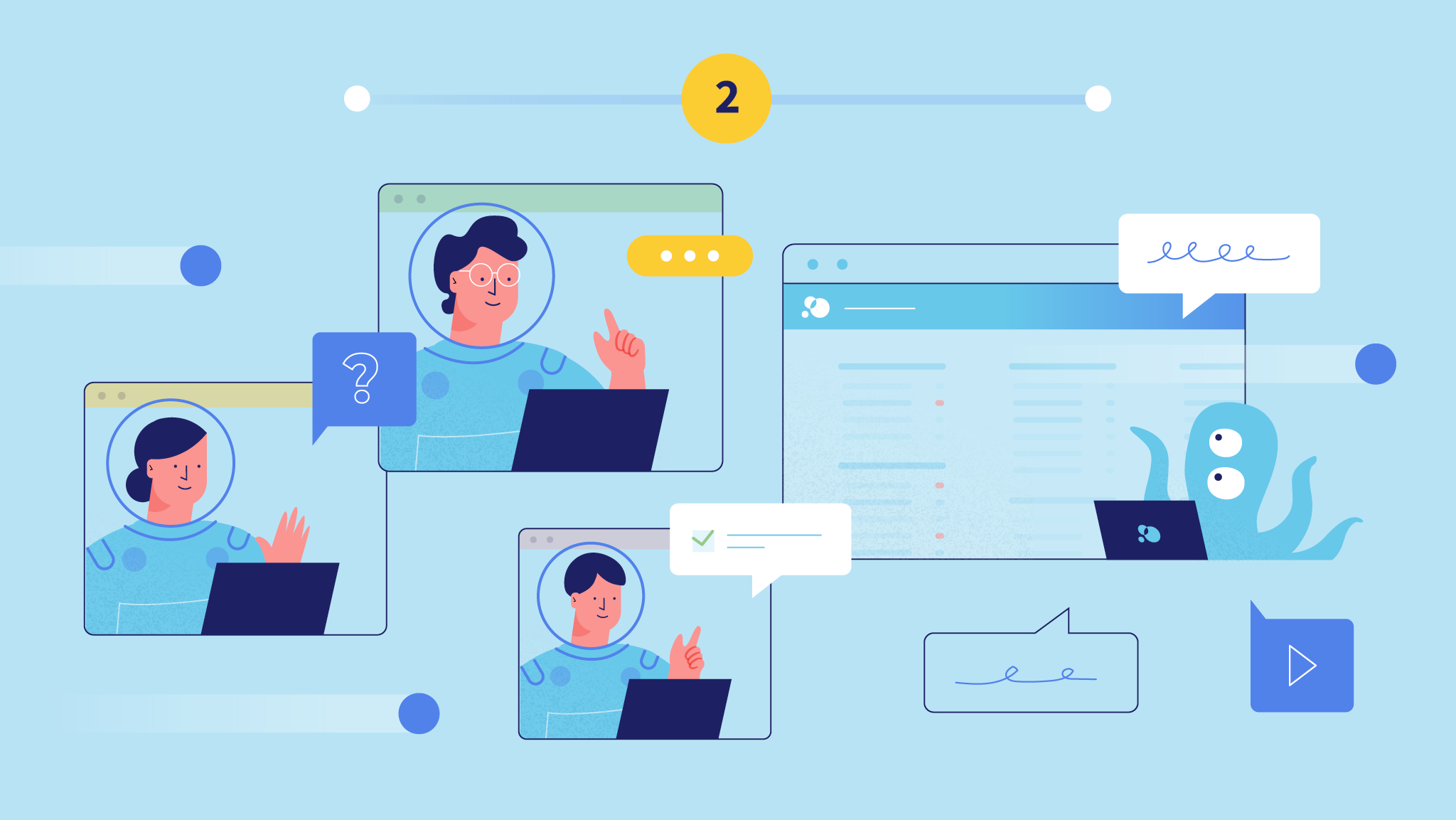
When it comes to a professional and complex business and translation management system like Plunet, receiving in-depth training is essential in order for you to work successfully with the software. We take the time to do this and accompany you right through to the Go-Live.
In the second part of our blog series on the implementation process at Plunet, we take a look at the first training units and their contents. Before you can get started with Plunet, the system is installed and configured according to your needs. During the Admin Trainings you will get to know the most important Plunet settings for your requirements. More details about each step can be found below.
Before you start
You should allow 90 minutes for each of the Admin Training sessions. The number of trainings, as well as the content of each session, may vary as they are individually tailored to your needs. The schedule, including the testing phase, is also adapted to match your pace. We recommend one to two training units per week, which are complemented by homework assignments. All training sessions are recorded and made available for your internal use. The training participants should have detailed knowledge of your company’s processes.
First training unit
In the first training session you will learn the basics of Plunet BusinessManager. Your Implementation Specialist will show you how to adapt the default list of countries to reflect your client base, and also defines the relevant language combinations in the system together with you. Additionally, properties are created. These are used in projects, as criteria for the resource search and as filters in the status reports. A set of instructions is defined for each individual workflow step (job) that can be assigned to external and internal resources.
- Basic knowledge of Plunet BusinessManager
- Countries and language combinations
- Properties for projects, resource search and status reports
- Tasks and work instructions in the job area
Second training unit
The second training focuses on the topic of prices. Price units for services are created; base prices are defined and linked to various price categories (fuzzy matches). You will also create standard price lists for customers and vendors. The latter then serve as templates for individual price lists.
- Emphasis on prices
Third training unit
In training unit number three, you will discover the variety of templates in Plunet. Our software incorporates numerous email and document templates for quotes, project deliveries and job assignments, which are entirely customizable to fit your requirements. We will also inform you about CAT licenses and, if applicable, how to set up multiple currencies, project types and roles, as well as time tracking and creation of tasks.
- Templates for quotes, deliveries and jobs
- Plunet and CAT licenses
- Currencies, project types, time sheet, tasks
Fourth training unit
What is the best way to handle customer and resource profiles? How do you assign properties and price lists? Contact management is at the center of training unit number four.
- Emphasis on contacts
Fifth training unit
In this training, you are shown how to manage user accounts for internal as well as external resources and customers. You will also get to know all the important details regarding user rights and rights groups. Plunet offers a multitude of options that can be adapted to reflect any company structure.
- User accounts, user rights and rights groups
Sixth training unit
The sixth and last admin training revolves around the most important software settings: global system settings, updates, default values for new contacts and users, feedback criteria and more. Getting the settings right will be a real time-saver later on!
- The most important system settings
System check
Once the system is fully configured, it is time for a first system check. During the check, we make sure that all prerequisites for the upcoming software trainings have been met. These include having a selection of completed customer and resource profiles; that your main workflows are set up, and that the most important templates – like the quote and invoice documents – have been customized.
At this point, you and your system are perfectly prepared for the next phase. In the third and final part of our blog series, you will discover more about the subsequent software trainings that get you ready for working in Plunet.
Did you miss part one? Read all about the essential preparation phase that precedes the Plunet training units.